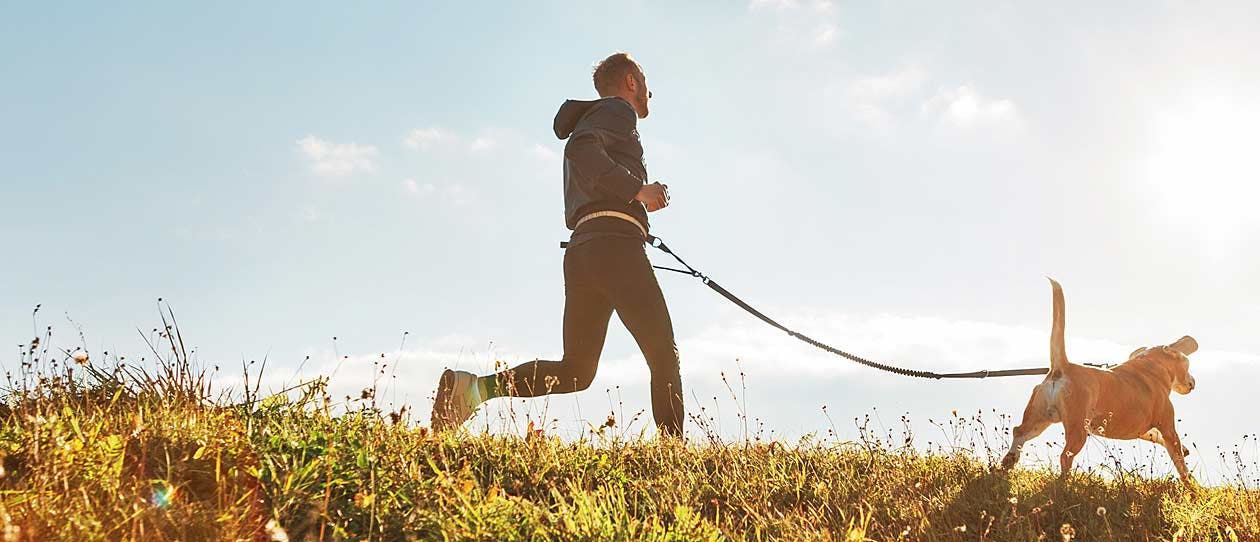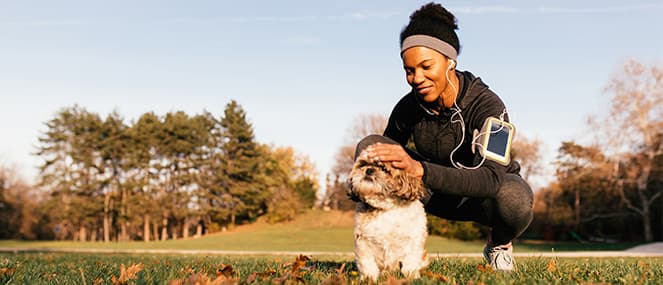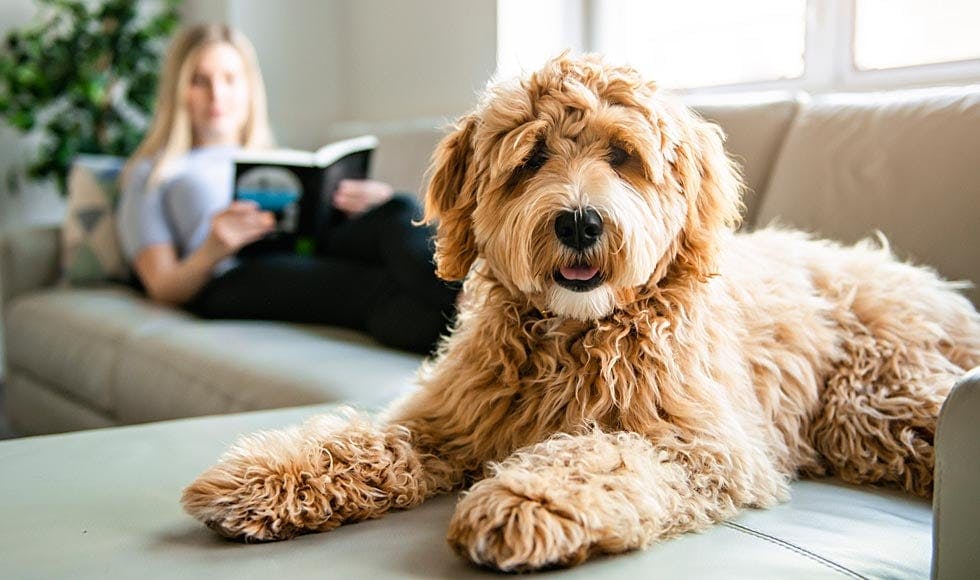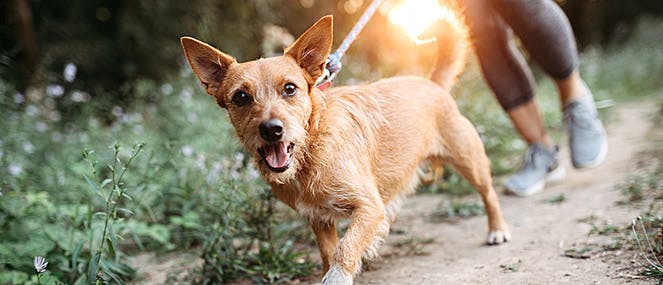
- A Guide To Perfect Your Pet's Health/
- Health and Vitality Products For Your Dog/
- 10 things to know before running with your dog


1. Make sure your dog is in good health
Any type of running is a high-impact activity, so your dog should be in good shape before you get started. If you’re not sure, book an appointment with your vet for a check up, especially if your dog has a medical history of hip dysplasia or arthritis, as running can aggravate these conditions. If your dog is overweight, you’ll need to work on reducing it’s weight through gentle exercise and a balanced diet before you teach your dog to run with you. Running can put serious strain on joints and cause long term issues so it is important to know when your dog is ready.2. Age matters: young or old
While it probably comes as no surprise that older dogs aren’t always up for following your running regime, this is actually the case for puppies. If you are planning to start running with your pup, they should be at least a year old. Their bones and muscles are still maturing in their first year, and running can cause serious damage, especially if you are planning on long-distance running. Consult your vet if you’re unsure if running is suitable for your pet as their ability can vary widely between breeds and individual dogs.3. Not all dogs may want to run with you
While it’s hard to find a dog that doesn’t bound with joy at the grab of a leash or on hearing the word “walkies”, not all dogs will enjoy running with you. Even dogs who fit the bill on paper in terms of breed, age and health, may simply look at you with a big, firm, ‘no way, nuh uh’.Other pooches may really enjoy running, but may leave you frustrated because their nature dictates they simply must stop and smell the roses. All of them. At every second gate. If you find yourself faced with either of these characters, your best bet is to stick to walking with the dog and train for the running by yourself, or find another doggie running mate.
4. The best running dogs
Breed is one of the biggest predictors of whether your dog is a suitable running partner, and what kind of running will suit them. Hunting and herding breeds like German Short-haired pointers, Jack Russells, Border Collies and Kelpies tend to suit long distances (over 10km), while Greyhounds, Pitbulls and Golden Retrievers suit middle distances (less than 10km).Very small and very large breeds don’t typically make good running partners at all, and it is not safe to train with dogs that have a tendency to overheat, such as pugs and bulldogs.
5. Start slow
Just like humans that are new to running, dogs will be more successful if you allow them to build up to it slowly. Start by taking long walks each day (2km or more) to increase your dog’s fitness level, and then slowly replace a few of these walks with slow runs. Always keep an eye on your dog and make sure your it is managing to keep up and does not become overly puffed out or is dragging on the leash. Gradually increase the speed and distance until they are happy running at your desired pace.6. Choose your route and time of day carefully
As well as choosing the right kind of run for your dog’s abilities, choose a route with soft surfaces. Avoiding concrete, hot roads and areas with debris including glass and prickles as they can harm your pooch’s paws.Understand when it is too hot to run with your dog and always avoid running on excessively hot days. In the summer, try to adjust your running schedule to early in the morning or late in the evenings to forgo the hottest part of the day.
7. Choose the right leash for running with your dog
Even if your dog is well-trained, it’s a good idea to keep them on a leash at all times when out running. Retractable dog leashes are not recommended for running, as they can easily tangle or become wrapped around people or objects, and at running pace. This could lead to a nasty pull for you or your dog. Choke chains are also not advised as it can collapse your dog’s windpipe. Go for a relatively short (1-2 metre) leash attached to a standard collar or harness.8. You’ll need a collapsible water dish
It’s important to keep your dog hydrated throughout a run. If possible, take a collapsible water dish or run a route where you know your dog will have access to clean water along the way. It is important that you don’t get too caught up and forget to let them stop for a drink or a break.9. After run care
After each run, check your dog’s paws for stick injuries or abrasions, especially their pads, and do an extra check for grass seeds between the toes. Ensure they have access to fresh water and a place to rest when they get home (or in the car if it’s a long drive).If you notice they have some unusual symptoms such as foaming at the mouth, panting heavily or glazed eyes, contact your vet immediately.
10. Recovery time
As with humans, it is important to consider recovery time between runs and give your dog a day off a few days a week. This will allow their muscles and joints to recover.If you take these factors into consideration, you will likely enjoy many special and memorable moments out running with your best friend by your side. For a little encouragement, try out our getting fitter with your dog action plan to get you started on the road to being a healthy pet parent.





